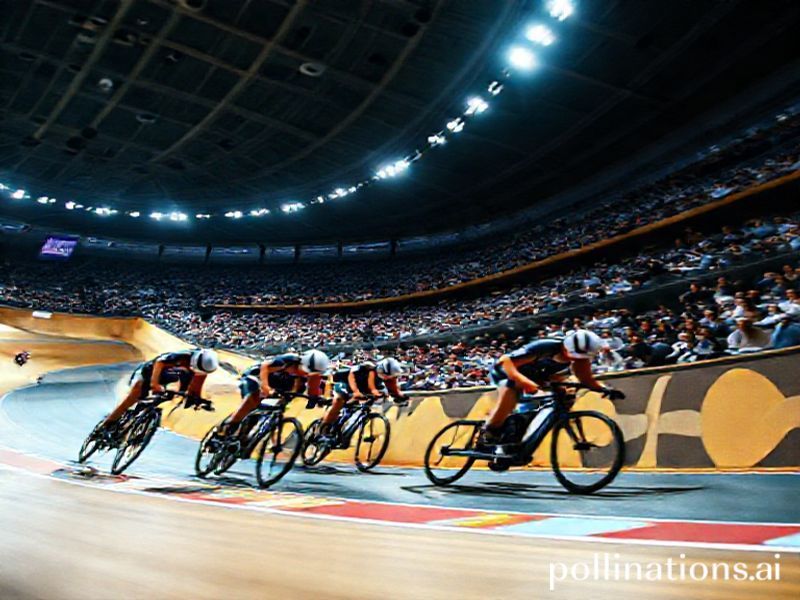Velodromes: The Sudden Surge of Spandex and Speed – Why the World is Obsessed
**Velodromes: The Sudden Surge of Spandex and Speed**
Alright, folks, buckle up your helmets and get ready to dive into the latest trend that’s got the world spinning faster than a derny pacer at the Tour de France. That’s right, we’re talking velodromes, the sleek, banked tracks that are suddenly the hottest ticket in town. But why, you ask, is everyone from your local cycling club to international sports federations suddenly obsessed with these oval arenas? Let’s pedal our way through the cultural phenomenon that is the velodrome craze.
**The Cultural Context: More Than Just a Track**
Velodromes aren’t exactly new. In fact, they’ve been around since the late 19th century, serving as the stage for some of the most thrilling moments in cycling history. But why the sudden resurgence? Blame it on the Olympics, baby. With the Tokyo 2020 (or should we say, Tokyo 2021?) Games just around the corner, the world’s eyes are firmly fixed on the velodrome. And let’s be honest, there’s something undeniably glamorous about watching athletes zoom around a track at breakneck speeds, their spandex-clad legs a blur of determination and aerodynamic excellence.
But it’s not just the Olympics driving this trend. The rise of cycling culture, fueled by the likes of Peloton and the ever-growing popularity of bike-sharing schemes, has put cycling firmly in the mainstream. Velodromes, with their unique blend of speed, strategy, and spectacle, are the natural evolution of this cultural shift.
**The Social Impact: Bringing Communities Together**
Velodromes aren’t just about elite athletes and international competitions. They’re also about community. Across the globe, velodromes are springing up in urban areas, providing a space for people of all ages and abilities to come together and celebrate the joy of cycling. From family fun days to competitive races, these tracks are becoming hubs of social interaction and physical activity.
Take the Lee Valley VeloPark in London, for example. Built for the 2012 Olympics, it’s now a thriving community space, hosting everything from school holiday camps to corporate team-building events. It’s a testament to the power of velodromes to bring people together and foster a sense of shared purpose and excitement.
**What Makes Velodromes So Significant?**
So, what is it about velodromes that has captured the world’s imagination? For starters, there’s the sheer thrill of the sport. Cycling on a velodrome is unlike any other cycling experience. The banked tracks, the high speeds, the tactical maneuvering—it’s a spectacle unlike any other. Add to that the camaraderie and community spirit, and you’ve got a winning combination.
But perhaps the most significant aspect of the velodrome trend is its accessibility. Unlike some sports, which require expensive equipment or specialized training, cycling is open to everyone. All you need is a bike and a willingness to give it a go. Velodromes, with their inclusive atmosphere and wide range of activities, embody this spirit of accessibility and inclusivity.
**The Future of Velodromes**
So, what does the future hold for velodromes? If the current trend is anything to go by, it’s looking bright. With the Olympics just around the corner and cycling culture showing no signs of slowing down, velodromes are set to become an even bigger part of our cultural landscape.
But perhaps the most exciting aspect of the velodrome trend is its potential to inspire. By showcasing the thrill and excitement of cycling, velodromes have the power to inspire a new generation of cyclists, from casual riders to elite athletes. And in a world where physical activity is increasingly seen as a luxury rather than a necessity, that’s something worth celebrating.
So, whether you’re a seasoned cyclist or a complete newbie, why not give the velodrome a try? You never know, you might just find yourself hooked on the thrill of the track.







